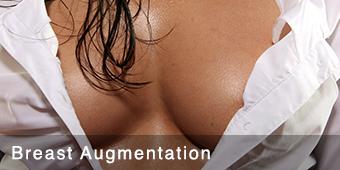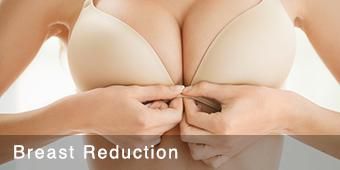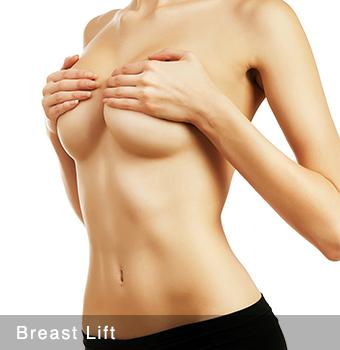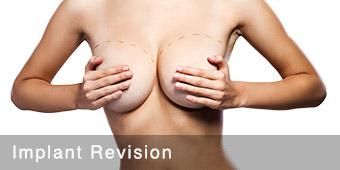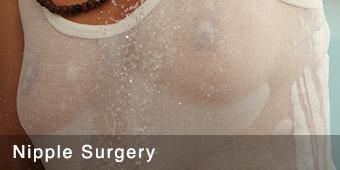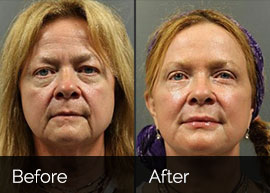Implants 101
Saline vs. Silicone
Silicone gel implants were first placed in 1962 on a woman from Houston, Texas, and they celebrated their 50th anniversary in 2012. Saline implants were introduced in 1965 as an alternative to silicone implants. Both types of implants are composed of a shell of a firm silicone elastomer. The difference is in the filling. Saline implants are filled with salt water, and gel implants are filled with a cohesive silicone gel. Currently on the market, 4th & 5th generation gel implants are available. During your consultation, you will be able to see and feel the difference between saline & silicone implants, and your surgeon will advise you if one or the other will work best to achieve your goals. In the past, half of women would choose saline and the other half would choose gels. The new 5th generation Sientra HSC (High-Strength Cohesive) silicone gel implants implants are so refined that 99% of our patients choose those. It’s a very personal choice, and our goal is to give you all of the information you need to make the decision that’s right for you!
Saline Implants
CON
- Firmer look and feel compared to gels
- Financial assistance in case of rupture within 10 years is only $1,200 (vs. $3600 for gels)
- Because saline is a liquid, saline implants ripple more than gels, which are semi-solid (like Jello)
PRO
- Greater variability in size because they are filled at the time of surgery
- Fill level is adjustable
- It’s obvious if you have a deflation
- Cost less then gels
- Has a physiologic filler: salt water
Silicone Gel Implants
CON
- Ruptures are usually “silent” and may be hard to detect
- Not as variable in size because they come pre-filled in 20-30 cc increments
- Cost more than saline
- Filler could be considered “less physiologic”
PRO
- Softer look and more natural feel compared to saline
- Less rippling than saline implants
- Financial assistance in case of rupture within 10 years is $3,600 (vs. $1,200) plus a free pair of new implants
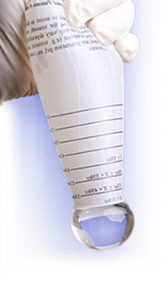 I’ve heard that the incision for a saline implant is smaller. Is that true?
I’ve heard that the incision for a saline implant is smaller. Is that true?
It is true for some surgeons, but Dr. Reid and Dr. Gordon use the Keller Funnel in all silicone gel breast augmentations. The Keller Funnel has been a real game changer in gel breast augmentation and you can read about it here THE KELLER FUNNEL – The Best Invention Since Breast Implants?
Are silicone gel implants safe?
Yes. To date, there has been no independently reviewed and validated research that demonstrates a link between silicone breast implants and autoimmune disease, connective tissue disease or breast cancer. Over 300 studies have been conducted around the world and no link has been established. Implant manufacturers voluntarily withdrew silicone implants from the market in 1992 amidst alleged controversy about potential health risks. From 1992 to 2006 in the United States, only women who were willing to participate in clinical trials or those undergoing reconstructive procedures after breast cancer had the option of choosing silicone implants. As of November 17, 2006, the FDA approved the use of gel implants in women aged 22 and over. Worldwide statistics show that silicone is far more popular than saline. The primary reason is that silicone feels and moves more like natural breast tissue.
5th Generation Silicone Gel Implants vs. Earlier Generations
Breast implants are among the most studied medical devices in U.S. history, and today’s silicone gel implants have come a long way since the first breast implants were placed in 1962. It’s like comparing an 8-track tape to an iPhone! We’ve learned so much in the last 50 years. Capsular Contracture was the most common complication that occurred with 1st – 3rd generation silicone implants. The fill consisted of a liquid silicone that was very oily, and the ideal outer shell material was very thin and weak. Rupture rates were unacceptably high. Today, the silicone filler has the soft feel of a liquid but has elastic properties that allow it to bind to itself. This refers to cohesiveness. The more the gel sticks to itself, the more cohesive it is and the less likely it is to bleed in the case of a rupture. The outer shells are reinforced multiple times to increase their strength. Allergan’s Natrelle Inspira Soft Touch (ST) implants and Sientra’s gel implants are both 5th generation implants and are considered “form-stable”. For most patient’s, Dr. Gordon and Dr. Reid use Allergan’s Natrelle Inspira and Inspire ST silicone implants because of the vast range of sizes and profiles available. At last count, there are 700 options, so rest assured, your perfect implant is out there, and we’ll help you figure out which one will best achieve your goals.
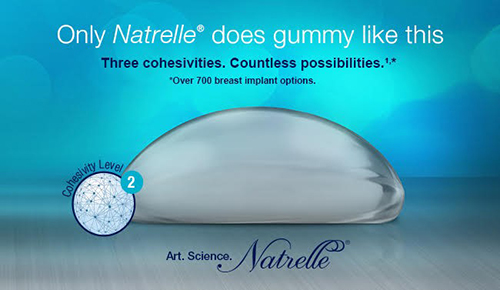
Allergan Inspira Implants with Three Levels of Cohesion – What Does It Mean for Me?
In simple terms, the more cohesive the gel, the better it will maintain its shape and the less it will ripple and wrinkle. Increased cohesion also enhances an implant’s ability to resist compression from overlying tissues, giving surgeons more power to transform breasts into the final desired shape and size. Finally, increased cohesion is beneficial in the event of implant rupture, as it minimizes gel bleed. The downside is the more cohesive the gel, the firmer the feel, and the more cohesive the implant, the more expensive it is.
So, our options are:
- Natrelle Inspira – Cohesivity Level 1
- Natrelle Inspira Soft Touch or ST – Cohesivity Level 2
- Natrelle Inspira Cohesive – Cohesivity Level 3
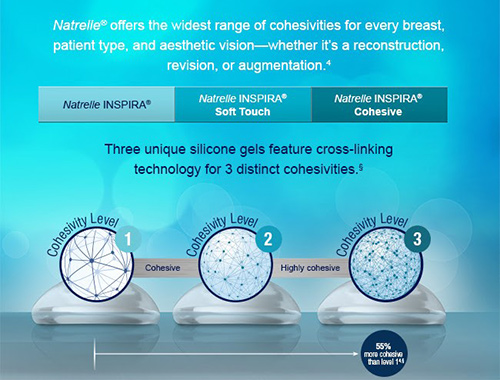
Until this spring, the Natrelle family only had 2 implants choices, the Inspira and the Inspira Cohesive. During this time, the Inspira implant was the preferred implant of our surgeons because the Inspira Cohesive implant is much too firm. While it’s a great choice for breast cancer reconstruction where the implant is needed not only for volume replacement but also to shape the breast, it’s usually not a good choice for breast augmentation. The introduction of the ST was exciting because it falls right in the middle of cohesivity. This implant is great for patients with thin tissues who are at risk for rippling and wrinkling and we frequently use it in breast implant revisions. It’s also great for the patient who desires a lot of upper pole fullness, as it creates a rounder, fuller breast. Most importantly, even though it’s more cohesive, it’s still soft. All of the Inspira implants come in 5 different profiles; low, low-plus, moderate, full and extra-full. More on profiles later. All of these choices, while initially overwhelming for patients, allow our surgeons to create a customized result based on your desires, your skin envelope and the quality of your tissues.
Sientra HSC (High-Strength Cohesive) Silicone Gel Implants

Sientra offers 5th generation round implants with HSC and HSC +. The HSC +, also called the 107 implant, is more cohesive and is similar to the Inspira ST. Sientra gel implants are offered in 4 projections; moderate, moderate plus, moderate high and high profile.
What are Gummy Bear Implants?
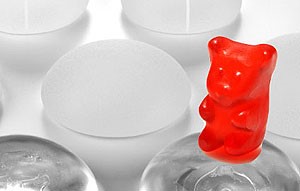
Besides the term “cohesive”, you may have heard of “gummy bear,” “form-stable”, or “highly cohesive” breast implants. Each is a different way of describing an implant that retains its shape. 5th generation gel implants are considered “gummy bear” implants. Mentor’s 4th generation are not, so we no longer offer those implants. So even though “gummy bear” is not a medical term, our favorite implants are often described this way because they are different from all others — inside and out.
Watch this video, which illustrates the highly cohesive nature of a 5th generation implant when it’s cut in half. You can see how the gel holds together uniformly without leaking but also remains soft. The gel acts more like a solid than a liquid because of its high level of cohesiveness.
Breast Implant Shapes-Round vs. Anatomic
Just when you thought there couldn’t possibly be more choices with regard to implants, you read about shaped implants and implants with different projections. Don’t stress. This will all be discussed at your consultation, as it relates to your body and your desires. Although it can be overwhelming to think about 5 different profiles in addition to CC’s and cup size, focus on our goal, which is YOUR LOOK. In the end, how you look and feel in and out of your clothes is all that matters. Remember all of the options allow us to customize your result. For most patients, smooth round implants with moderate or full projection are chosen.
Shapes:
Round implants are the most popular and create fullness throughout the entire breast.
Anatomical implants are also called tear-drop, contoured or shaped. They are meant to mimic the slope of a natural breast, so they provide more fullness in the lower portion or lower pole of the breast.
In most patients, round implants placed under the muscle have a more natural appearance than shaped or tear-drop implants, which can appear somewhat elongated. When a woman stands up, a round implant assumes a natural tear-drop shape. When a woman lies down, a round implant settles evenly, like natural breasts would. Shaped implants maintain their same shape whether lying down or standing, and this can appear unnatural in some women. In patients with Constricted or Tuberous Breasts, shaped implants can work very well, as these women are lacking tissue in the lower pole of the breasts. This is in contrast to most women who have most or all of their tissue in the lower portion of the breast.
Dr. Reid and Dr. Gordon have extensive experience with both round and shaped implants and will recommend the best device for your specific situation and desires.
Five Implant Profiles:
Breast implants are offered in different profiles or projections. Projection refers to how much the implant “sticks out” or projects forward from the chest wall. Natrelle Inspira implants are available from left to right in Extra-Full, Full, Moderate, Low-Plus, and Low.

The image above shows the same size implant in cc’s or volume but with different profiles or projections. The implant on the far right is the low profile. It is the widest and has the least amount of projection. The Extra-Full on the far left has a very narrow base, thus the most projection. Because of this, the same size implant (in cc’s) will give a different post-surgical breast size and look depending on the profile of the implant used.
The width of your breasts, your desired size and degree of upper pole “roundness” that desired are the determining factors in which profile is recommended.
With so many choices, how will I know what size, style and type of implant is best?
Many factors will influence the size, style and type of implant recommended to you, so that’s why it’s critical to choose a plastic surgeon with vast experience in breast augmentation. Your physical build, the width of your chest, the width of your breasts, the amount of natural breast tissue you have, your overall breast shape, nipple position, and your desired fullness will all be considered in choosing the perfect implant for your body and your goals. We can’t wait to meet you!
